Different Types of Sea Waves – A Comprehensive List
Waves are one of the most beautiful and awe-inspiring natural phenomena. Glancing through the ocean, one can see innumerable waves as far as the vision can decipher.
They are in a continual set of motion – rising, moving forward, splashing amongst themselves, losing their motion and then rising again. They are a treat to watch and even better to play with.
They are the reason why beachgoers and surfers visit otherwise boring sea beaches. Yes, you heard me right! Imagine a beach with no waves at all.
Sand and water would be all you’d be left with, which would be pretty dull!
Sea waves are one of the beautiful natural marvels that excite us. However, different types of waves are formed according to various weather conditions.
While those calm and large waves come in regular intervals to make beachgoers and surfers happy, for seafarers, it’s a nightmare just because those monster rogue waves often result in causalities.
Similarly, there are small waves even on calm waters. Water appears to be moving in a circular motion as the energy created by some forces passes through the water.
The surface water never travels, but the energy moves across if not obstructed by any obstacles.
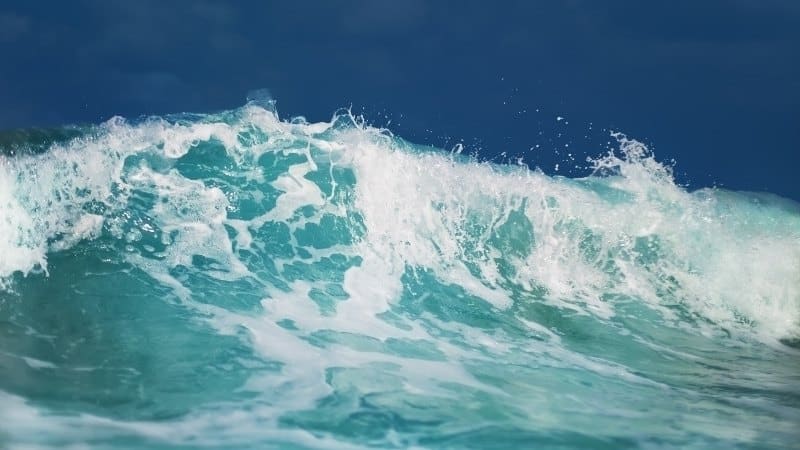
How are Sea Waves Formed?
As discussed earlier, there are several types of waves, and the forces behind them are also different. The most common cause of ocean waves is wind. Wind-driven waves, also known as surface waves, are formed due to the friction between surface water and wind.
When the wind is blowing on the sea, the surface exerts a gravitational force on the bottom layer of the wind. This, in turn, exerts the pull on the layer above it until it reaches the topmost layer.
With the gravitational pull being different at each layer, the wind moves at a different speed. The topmost layer tumbles, forming a circular motion. This creates a downward pressure at the front and upward pressure at the rear of the surface, causing a wave.
However, tidal waves are created by the gravitational pull of the sun and moon on the earth. It should be noted that a tidal wave is a shallow water wave, not a tsunami.
While the above-mentioned waves are not dangerous in their impact, there are hazardous waves, including tsunamis, caused by severe weather conditions such as a hurricane, typhoons, tornados, and other natural calamities, including earthquakes, landslides, and volcanic eruptions.
Waves are disturbances (termed oscillations) on the surface of the water, which can be formed on all types of water bodies like seas, oceans, rivers and even lakes.
Although waves stem from some external force, they are a restoring force, which counters the disturbance introduced in the water. They seem to transport water and debris as they move. But there is more to it than meets the eye.
Waves are energy passing through the water, which makes the water move in a circular motion. If you might have closely observed a boat encountering a wave, the wave lurches the boat upward and forward, swirls it, but then the boat comes down to its original position.
This is evidence enough that waves do not make the water travel much but are simply the manifestation of kinetic energy transfer through the water.
Some might argue that they have seen waves moving forward and splashing on the shore. This happens because the inclined edge of the beach offers resistance and slows down the bottom portion of the wave. This creates an imbalance, and the upper part of the wave, or the crest, topples forward and splashes on the beach.
Having established that waves represent the movement of energy, the obvious question is, from where do waves get their energy?
While mild winds blowing over the surface of the water may create small surface waves, extreme weather conditions like hurricanes and cyclones produce strong winds and often create huge waves, potentially hazardous.
Some adverse natural phenomena like underwater earthquakes, landslides or volcanic eruptions can create humongous waves known as tsunamis, which can cause unimaginable destruction to the coastal ecology and human inhabitations in the area of impact. Recurring natural phenomena like tides can also cause waves.
Waves are classified according to their formation, source of energy and behaviour. Here we will look at the different types of sea waves and their formation.
Different Types of Sea Waves
As mentioned, sea waves are categorized based on their formation and behaviour. The commonly used classification of ocean waves is based on the wave period.
Here are all the different types of sea waves.
Breaking Waves
The breaking waves are formed when the wave collapses on top of itself. The breaking of water surface waves happens anywhere on the surface of the seawater.
However, one can see breaking water surface waves most commonly on a coastline since wave heights are normally amplified in the shallower water areas.
When waves approach the shore, their profile is modified by the resistance offered by the sloping seafloor. The seafloor obstructs the motion of the wave’s base (or trough) while the top part (or crest) continues to move at its usual speed. As a result, the wave begins to lean forward as it gradually approaches the shore.
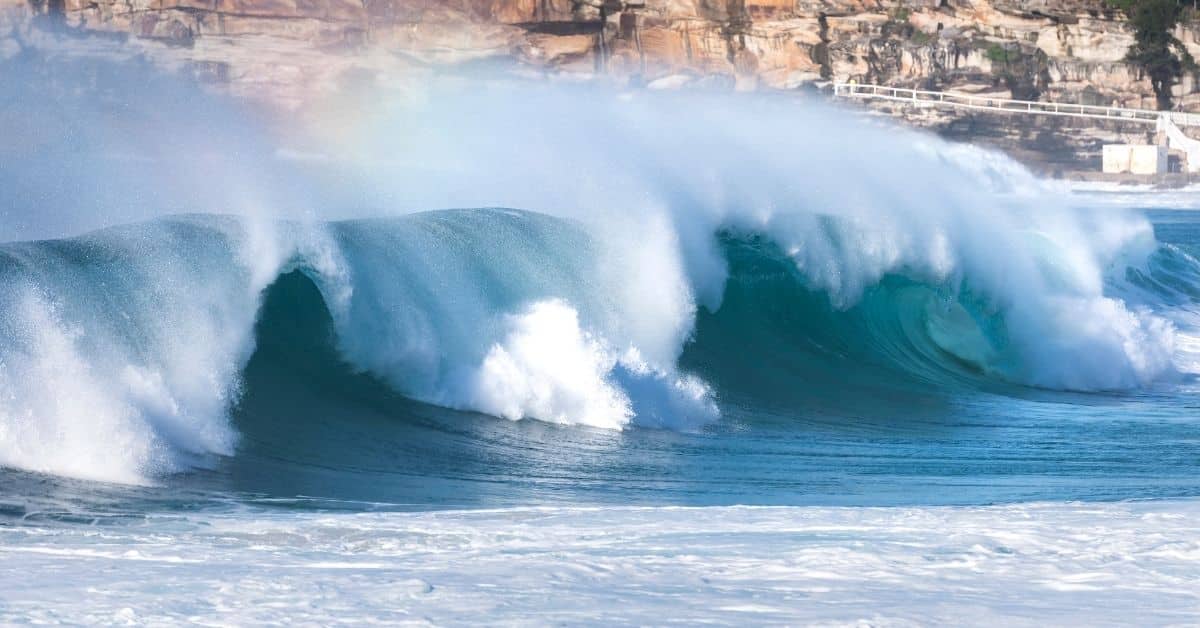
When the steepness ratio of the wave reaches 1:7, the crest outruns the slow-moving trough, and the entire profile of the wave collapses on itself, thus forming a breaking wave.
Classification of breaking waves
Spilling waves
Also known as mushy waves in the beachgoers’ terminology, these waves are formed at gentle inclinations of the ocean floor. If the shoreline is gently sloping, the energy of the waves is gradually expelled, the crest slowly spills, and mild waves are formed. These waves take more time to break as compared to other types.
Plunging Waves
When waves pass over a steeply inclined or rugged ocean floor, the crest of the wave curls and traps a pocket of air underneath it. As a result, the waves somewhat explode when they reach the steeper gradient of the shore, and all of the waves’ energy is dissipated over a much shorter distance. Thus plunging waves are formed. Common during offshore winds, these waves have high energies and travel swiftly, which may be dangerous to unsuspecting beachgoers and surfers. They also result in tremendous erosion and deposition.
Surging waves
They are produced when huge swells reach shorelines having a steep profile. They travel at high speeds and have no crest associated with them. Although they might seem harmless because they don’t break like other waves, they can be dangerous because of their strong backwash (pulling or sucking effect).
Collapsing waves
They are a blend of plunging and surging waves. Their crest completely breaks, and the bottom profile gets vertically aligned and collapses, turning into whitewater.
Deep Water Waves
Deepwater waves, as the name suggests, have their origin where the ocean’s water depth is significant, and there is no shoreline to provide any resistance to their motion.
Technically speaking, they are formed in areas where the depth of the water is more than half of the wavelength of the wave. The speed of the wave is a function of the wavelength of the wave.
This means that waves with a longer wavelength travel at greater speeds than waves with a shorter wavelength.
They are multiple waves of different wavelengths, which superimpose upon one another to form a combined larger wave.
They are long, travel in straight lines, and have enough energy to traverse much greater distances than other waves, like breaking waves. The major force of causation is wind energy, which can be from local or distant winds. They are also known as stokesian waves or short waves.
Shallow Water Waves
These waves have their origin where the depth of the water is much lesser. They typically travel in waters with depths lesser than 1/20th of the wave’s wavelength.
But unlike deep water waves, the speed of the wave has nothing to do with the wavelength of the wave, and the speed is a function of the depth of the water.
This means waves in shallow waters traverse faster than in deeper waters. More specifically, the speed is equal to the square root of the product of the depth of water and the acceleration due to gravity.
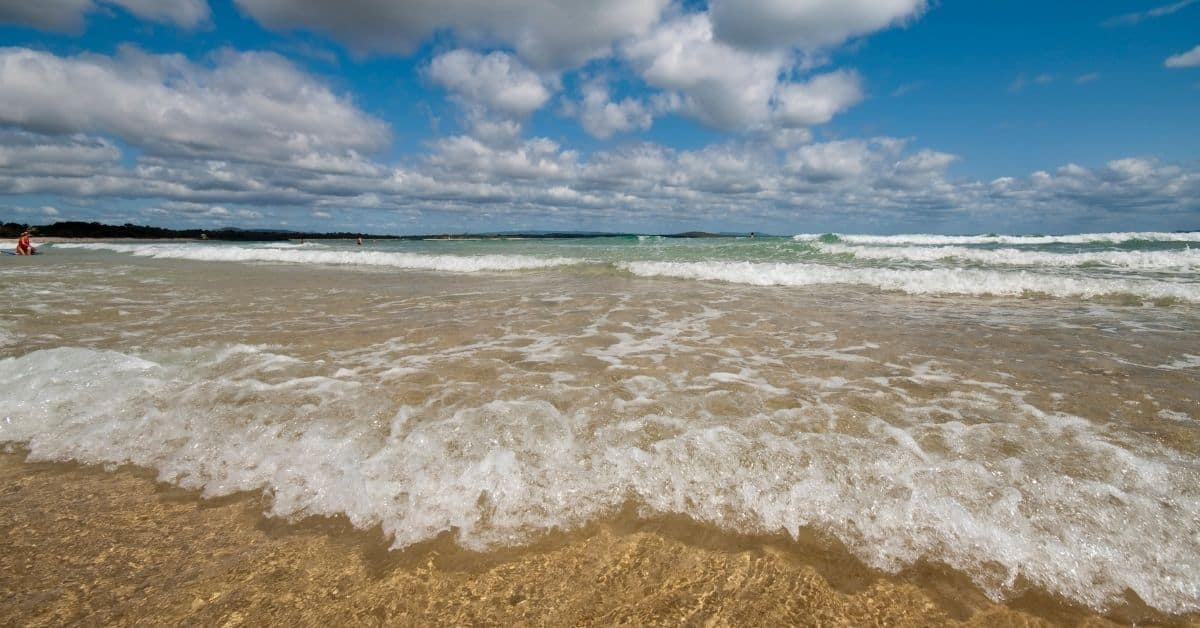
Speed = √(g . depth) (g = gravitational constant, 9.8m/s2; D = depth in metres)
They are also known as lagrangian waves or long waves.
These waves may have a variety of causation factors behind them.
Types Of Shallow-water Waves:
Tidal waves
They are caused due to astronomical forces like the gravitational pull of the sun and the moon on the ocean water. You can think of the high and low tides as the traversing of a wave with a period of 12 hours.
Tsunamis
Tsunami is a Japanese word, as Japan is possibly the country most frequently affected by tsunamis. The word ‘tsunami’ originates in two different words; ‘tsu’, which means harbour, and ‘nami’, which means wave.
So it roughly translates to ‘harbour waves. Most tsunamis (about 80%) result from large-scale underwater earthquakes.
The rest 20% is generated by underwater landslides, volcanic eruptions and even meteorite impacts. They travel at very high velocities and are highly dangerous and devastating.
They are considered shallow-water waves because a typical tsunami wavelength is several hundred miles long, for example, 400 miles, while the deepest part of the ocean is 7 miles deep.
So the depth is less than 1/20th of wavelength, as discussed earlier.
Inshore Waves
The length of these waves is less than the depth of the water they enter, which decreases the velocity of the waves. This results in a decrease in the wavelength and an increase in the height, eventually breaking the wave.
These waves drain the beach as a backwash.
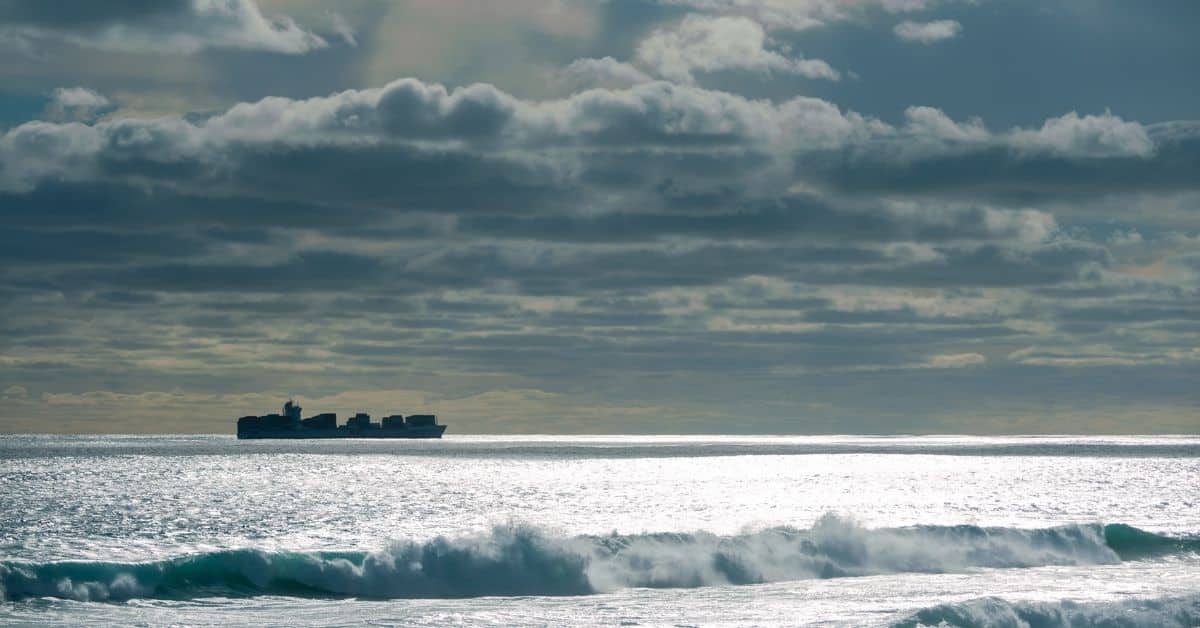
Internal Waves
They are one of the largest waves in the ocean but are barely noticeable on the surface due to their formation in the internal layers of the water.
Ocean water is composed of different layers because the more saline and colder water tends to sink beneath the less salty warmer water. Internal waves are generated when the interface between these distinct layers is disturbed due to external forces like tidal movements.
Although similar to surface waves in shape and structure, they traverse long distances and attain towering heights when they hit a landmass. According to scientists, the largest known internal waves are generated in the Luzon Strait in the South China Sea (about 550 feet tall)
Kelvin Waves
Kelvin waves are large-scale waves caused by a lack of wind flow in the Pacific Ocean. They were discovered by Sir William Thompson (who was later known as Lord Kelvin).
Kelvin waves are a special type of gravity waves that are influenced by the Earth’s rotation and get trapped at the Equator or along lateral vertical boundaries such as coastlines or mountain ranges.
There are two kinds of Kelvin waves – coastal and equatorial waves. Both these waves are gravity-driven as well as non-dispersive in nature.
Progressive Waves
For a progressive wave, the amplitude equals overall points and has net energy flow. In other words, it’s a form of a wave in which the ratio of an instantaneous value at one point to that at any other point is constant. There are three types of progressive waves such as longitudinal, transverse, and orbital waves.
Capillary Waves
Capillary waves closely resemble ripples in their structure. The restoring force involved is capillarity, which is the binding force that holds together the water molecules on the ocean’s surface.
Their particularly wavy structure is caused due to light breezes and calm winds that blow at low speeds of about 3-4 metres per second at a reference level height of 10 metres from the surface of the water.
Typical wavelengths are less than 1.5 cm and periods are less than 0.1 seconds.
As stated by the famous Physical Oceanography professor Blair Kinsman in his book ‘Wind Waves’ (1965), “The shortest‐period waves, and the first to be noticed on the ocean surface when the wind starts blowing, are the capillary waves, which resemble a cat’s paws ripping the otherwise smooth surface of the water.”
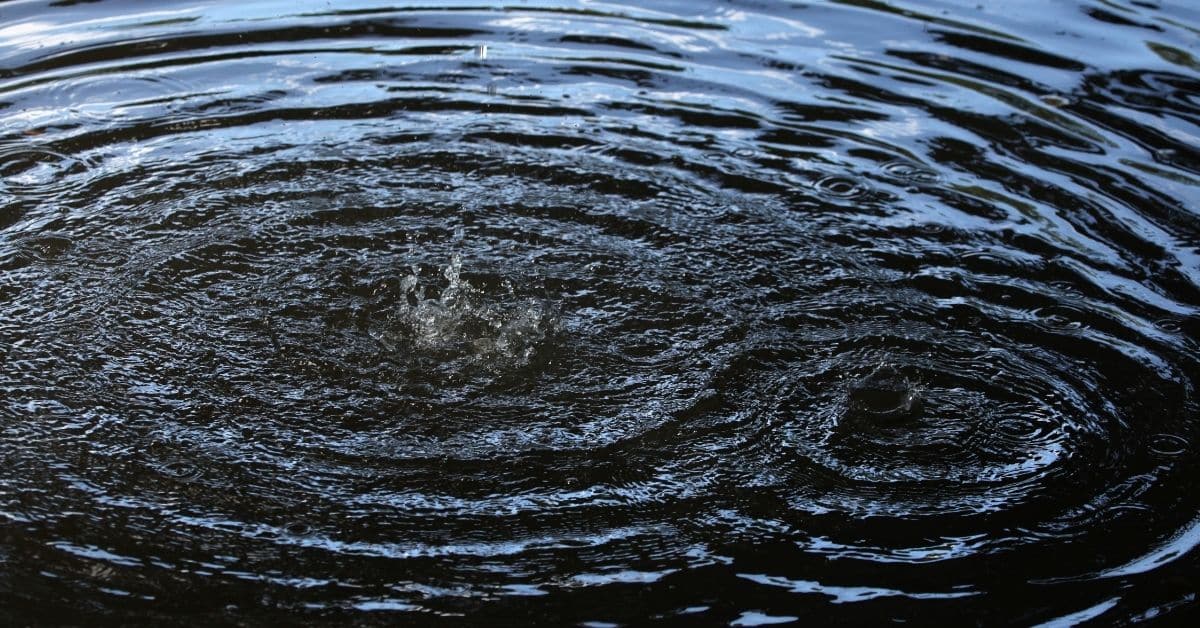
Refracted Waves
Refracted waves travel in shallow water when they approach the shore, and the shallowness decreases the power of the wave and causes a curve. These are usually seen near headlands and bays.
Seiche Waves
Seiche waves or simple seiche (pronounced ‘saysh’) are standing waves that form in a confined or partially confined body of water. Standing waves, in general, can form in any semi-enclosed or enclosed body of water.
In general, when water sloshes back and forth in a swimming pool, a water tub or even a glass of water, it is a seiche on a much smaller scale. They are formed in bay areas and large lakes on a larger scale.
Seiches are generated when either rapid changes in the atmospheric pressure or strong winds force the water and push it to pile up in one part of the water body.
When the external force finally stops, the piled-up water, possessing potential energy, rebounds back to the opposite side of the enclosed water body.
This periodic oscillation of water, without anything to offer resistance, continues for long intervals of time, typically many hours or even many days in the end. They can also be caused by storm fronts, tsunamis, earthquakes in ocean harbours, or sea shelves.
Many times, Seiches may be mistaken for tides. This is because the period of the wave (the difference between the high(crest) and low(trough)) may be up to 7-8 hours, which is comparable to the time period of most tides.
Although the causal factors may be the same for seiche waves and tsunamis, seiches are fundamentally different from tsunamis.
Seiches are standing waves with long periods of oscillations and occur in confined bodies of water, while tsunamis are progressive waves which generally happen in free bodies of water.
Frequently Asked Questions
1. What do you mean by sea waves?
If they are not obstructed by anything, waves transmit energy and not water across the water body in which they form. Also, they can travel across the ocean basin. They are commonly formed by wind, and wind-driven waves, also known as surface waves, are created due to the friction between the surface water and the wind.
2. Why are Ocean Waves so important?
Ocean waves are essential for forecasting weather and climate modelling. They are important for the livelihoods of coastal communities and determine shipping routes.
3. What is the sound of sea waves called?
Many of us would not know that there is a literary word for the sound sea waves make when they lash the shores. It is called ‘susurration‘ and derives from the Latin verb ‘susurrare’, which means to whisper. Hence, it can be used for gentle waves. Huge waves are said the thunder.
4. What are breaking waves?
The breaking waves are formed when a wave collapses on top of itself. It can happen anywhere on the surface of the seawater. However, one can see it most commonly on a coastline since wave heights are normally amplified in the shallower water areas.
5. What are internal waves?
Internal waves are one of the largest waves in the ocean. The saline and colder water sink beneath the less salty warmer water. However, internal waves are formed when the interface between these distinct layers is disturbed due to external forces like tidal movements.
You may also like to read –
- Understanding Thermoclines In Ocean Waters
- The Indian Ocean Tsunami Warning System: Saving Ships from Tsunami
- BioWAVE: A Unique Method for Generating Power from Ocean Waves
Disclaimer: The authors’ views expressed in this article do not necessarily reflect the views of Marine Insight. Data and charts, if used, in the article have been sourced from available information and have not been authenticated by any statutory authority. The author and Marine Insight do not claim it to be accurate nor accept any responsibility for the same. The views constitute only the opinions and do not constitute any guidelines or recommendations on any course of action to be followed by the reader.
The article or images cannot be reproduced, copied, shared or used in any form without the permission of the author and Marine Insight.
Do you have info to share with us ? Suggest a correction
Subscribe To Our Newsletters
By subscribing, you agree to our Privacy Policy and may receive occasional deal communications; you can unsubscribe anytime.




like that
I am proud to be a marine engineering
This is fascinating! I’d have thought each kind of wave would have a much more exotic, poetic name. I am pleasantly surprised to learn the science behind it all.
THANKS FOR THE DATA…I LIKE MARINE ENGINEERING…….
this is extremely boring
Wow! Thanks for explaining here the different classifications of waves. I learned a lot. I wished you completed each type with an image for visual learners like me.
@Genevieve: Thank you for the comment and suggestion. Will keep that in mind 🙂
Is there a way to artificially split sea water using technology that could generate waves moving in opposite directions even for a minute perhaps. Could ultrasonic vibrations cause this. Thank you. Love your work
Can a wave leap into the air — detached from the sea?
Thanks,
Ben
It is possible for a wave to break and form an air-sea foam, but a wave itself cannot detach from the sea and leap into the air.